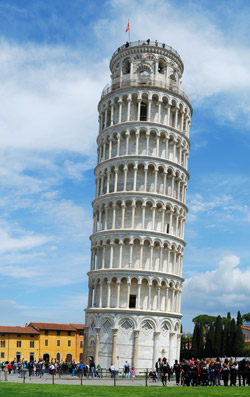Acceleration Due To Gravity Is
The acceleration due to gravity is the acceleration that an object experiences considering of gravity when it falls freely shut to the surface of a massive body, such as a planet. As well known every bit the acceleration of free fall, its value can be calculated from the formula
where Thou is the mass of the gravitating body (such every bit the Globe), R is the radius of the body, h is the height above the surface, and G is the gravitational constant (= 6.6742 × 10–11 Northward·g2/kg2). If the falling object is at, or very well-nigh at, the surface of the gravitating body, then the above equation reduces to
In the instance of the Globe, 1000 comes out to be approximately 9.8 thousand/south2 (32 ft/southward2), though the verbal value depends on location because of ii master factors: Globe'south rotation and Earth's equatorial burl.
Why g varies from place to place
The downward force of gravity is opposed by an outward centrifugal forcefulness due to the planet's rotation, which is greater at the equator than at higher latitudes. (The centrifugal force is "fictitious" in the sense that the real strength caused by rotation is the centripetal force; however, it is a convenient fiction for the sake of calculations.) Past itself, this effect would issue in a range of values of g from 9.789 m/s2 (32.116 ft/south2) at the equator to ix.823 yard/s2 (32.228 ft/s2) at the poles. This discrepancy is further accentuated because of Earth's equatorial burl, which causes objects at lower latitudes to be further from the planet'south center than objects nearer the poles and hence subject to a slightly weaker gravitational pull.
Overall these two furnishings result in a variation of 0.052 m/stwo (0.171 ft/southii) in the value of g, which leads to a variation in the weight of an object by about 0.v% depending on whether it is weighed at the equator or at one of the poles. Taking an average over the whole surface of the Earth, physicists have arrived at a standard value for g of 9.80665 one thousand/stwo (32.1740 ft/s2). On other planets and moons the values of the acceleration due to gravity may be very different, resulting in different weights for the same object on these diverse worlds.
Event of air resistance
If World had no atmosphere, an object dropped from a slap-up height would keep accelerating at a rate of 9.viii m/s2 (32 ft/due south2) until information technology striking the footing. For example, if a person fell from an aircraft at an altitude of 10,000 m (32,808 ft), they would exist traveling at about 442 m/due south (one,450 ft/s) by the fourth dimension they landed. In practise, this doesn't happen considering of air resistance. The faster an object falls, the greater is the air resistance acting on it. At a certain velocity, known as the terminal velocity, the downward force of gravity is exactly balanced past the up force of air resistance and there is no further dispatch.
If there were no atmosphere, all objects would fall at the same rate. This happens, for case, on the Moon. In i of the most memorable moments of the space program, David Scott, commander of the Apollo xv mission, standing on the Moon's surface, dropped two objects – a geological hammer and a falcon's feather (the Apollo 15 lunar module was called Falcon) – at the same time from the aforementioned height. The feather didn't drift down, meanderingly, as it would have done on Earth. Instead, in the airless vacuum of infinite, it barbarous straight, without a flutter, keeping pace with the hammer and reaching the lunar surface at the aforementioned instant.
Galileo and the Leaning Belfry
I of the most famous stories in scientific discipline is about Galileo Galilei and the Leaning Belfry of Pisa. Galileo supposedly reached out from an upper balcony and let autumn two stones of different weights. A remarkable thing happened: to the gasps and amazement of the oversupply below, the stones hitting the ground together. Although doubtless in part apocryphal, the business relationship does at least have some backing from Galileo'south pupil and amanuensis Viviani, who reported that Galileo had washed the experiment "in front of all the faculty and students assembled."
 |
| Leaning Belfry of Pisa. |
m-forcefulness
Units of g, or 'gee', are used in aerospace when describing loads on shipping or spacecraft. Someone who carried out remarkable experiments (on himself) involving very high g-forces was the pioneering aerospace doctor John Stapp.
Acceleration Due To Gravity Is,
Source: https://www.daviddarling.info/encyclopedia/A/accgrav.html
Posted by: sandersdideseld43.blogspot.com


0 Response to "Acceleration Due To Gravity Is"
Post a Comment